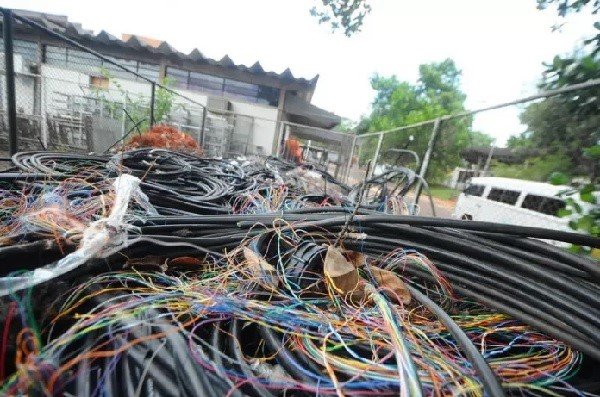In a coordinated action, the Military Police put an end to the activities of a gang specializing in cable theft in Imbariê, Duque de Caxias, Baixada Fluminense, Rio de Janeiro. Eight suspects of attempted theft of underground cables were arrested. Tools used in the crime were also seized: a ton of cables already stolen, a truck for transporting the illicit material, as well as equipment such as a pickaxe, shovel, ladder, and saw arches, which are usually used to access and cut the cables.
This Content Is Only For Subscribers
To unlock this content, subscribe to INTERLIRA Reports.
What are the Consequences of this Crime?
Cable theft has serious repercussions on people’s daily lives and the functioning of essential services. From interruptions in the supply of electricity and telecommunications to the risk of accidents due to exposed cables, the effects of this criminal modality are vast. Furthermore, such actions represent a high cost for companies and, consequently, for the population, who end up indirectly bearing the losses.
National Plan Against Wire Theft
In October 2023, the Public Security Committee of the Chamber of Deputies approved Bill 2832/23, which includes the National Plan to Combat Crimes of Theft of Non-Ferrous Metals in the National Public Security Policy. The objective is to intensify the fight against crimes such as the theft of copper wires and cables in cities.
Rio de Janeiro
A survey by Light, a company that supplies energy to Rio de Janeiro, shows that the theft of cables from the company’s underground network in the Metropolitan Region increased by 160% in 2023 compared to the previous year. More than 16,000 meters of copper cables were stolen last year. In 2022, just over a 1,000 meters of wires were removed. In 2023, the company recorded 373 incidents, which left 192,377 customers without electricity for almost two hours. The acts of vandalism also caused the company to spend almost R$4 million to replace the material.
Price Increase
The increase in theft of copper wires is directly related to the explosion in international prices for this metal, which reached around 10% in the last six months, reaching close to 9,000 dollars per ton on the London Metal Exchange (LME). Restrictions during the Covid-19 pandemic and the growth of the electric vehicle, wind and solar energy industries, which require large amounts of copper, influence this price.
Copper is irreplaceable in these applications, making it an attractive investment as a green metal, with higher prices expected in the coming years. This increase in prices has been accompanied by an increase in copper thefts around the world, with Brazil, the United States, India, South Africa and China highlighted as the nations most affected by the problem, according to the study “Copper Theft: a growing concern for industries around the world.”
Energy Transition
In Brazil, the energy transition continues to advance. In Rio Grande do Norte alone, the leader in wind energy production in Brazil, 13 new wind energy farms were created in the first two months of 2024 as indicated by the Renewable Energy Map of the Observatório da Indústria Mais RN, linked to the Federation of Industries of the State of Rio Grande do Norte (Fiern).
With a total of 293 wind farms in operation, Rio Grande do Norte remains the leader in operating power, with 9.43 GW, representing approximately 32% of all wind energy generation in Brazil.
Search for Investment
The advance in the energy transition also attracts investments, as demonstrated by the recent visit of executives from the Chinese automaker BYD on Tuesday (19/03). During their visit, Governor Fátima Bezerra of Rio Grande do Norte (RN) emphasized the state’s near-completion of its transition to renewable energy sources. RN now stands as the sole region in Brazil where BYD cars will be powered exclusively by renewable energy, marking its distinctive status as the pioneer in the nation’s energy transition.
Simultaneously, governors from various Brazilian states are gearing up for the Brazilian Forum of Energy Leaders, eyeing investments totaling R$ 1 trillion over the next decade from the private sector. Among them, Fátima Bezerra of Rio Grande do Norte, Eduardo Leite of Rio Grande do Sul, and Cláudio Castro of Rio de Janeiro aim to showcase their states’ potential to attract investments, particularly in wind energy (onshore and offshore), photovoltaics, biogas, and green hydrogen.
Source: Folha de São Paulo; O Antagonista; Bahia Econômica; Tribuna do Norte; Rural de Mossoró; Extra; CNN; Câmara; Band RN; DW.




